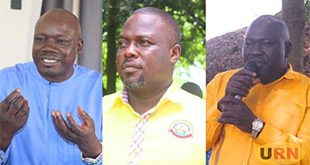
Kampala, Uganda | THE INDEPENDENT | The status of Uganda’s roads report as of June 30, 2020 has been submitted to Parliament and Lango with Karamoja sub-regions come off worst in the number of paved road kilometres.
Members of parliament have been relentlessly questioning the criteria followed by the executive in tarmacking roads and at one time the Speaker asked why the proposed Jinja expressway was to be financed under the untested Public-Private partnership yet the state borrows to build roads in other parts of the country.
Speaker Rebecca Kadaga earlier this year threw out a Ministry of Finance request to borrow 108.5 million Euros from the Commercial and Imperial Bank of China until the issue of the Jinja Expressway which she described as Uganda’s main artery to the sea was resolved.
It now transpires that with the country having a total of 5,398 kilometres of paved road, Lango and Karamoja only have a minuscule share with have been found to have the lowest tarmac density compared to other parts of the country. Only 151 kilometres of the paved roads are in Lango and 163 in Karamoja. 181 kms are being worked on in Lango and 20 kilometres are currently being built in Karamoja.
On the other hand, according to the report presented by Works minister General Katumba Wamala to the House on Wednesday, Buganda region has 1,594 paved kilometres with 177 kilometres ongoing and is “followed” by Ankole sub-region with 569 kilometres of paved roads. Acholi follows closely with 521 kilometres paved.
The other reasonably paved sub-regions are Rwenzori with 500 kilometres of paved roads and Bunyoro with 484 paved roads with works on another 379 kilometres currently ongoing. Kigezi sub-region then follows with 330 kilometres of paved roads while 77 kilometres is currently being worked on.
Busoga sub-region comes next with 254 kilometres followed by Elgon sub-region region with 222 kilometres and 205 kilometres ongoing. Teso region comes off with 216 kilometres already covered and 26 kms ongoing while West Nile has 214 paved kilometres with 66 kilometres ongoing. Bukedi already has 179 kilometres of paved roads while 71 kilometres are ongoing.
According to General Katumba Wamala, the Ministry and Uganda National Roads Authority followed specific criteria in paving roads and overtime, the coverage will be enhanced. He says some of the technical reasons behind paving the roads include, roads critical to support agriculture, tourism, oil and gas, minerals and other economic activities.
Others are roads that access industrial parks and roads that are strategic for trade and roads that foster regional integration among others.
According to Katumba Wamala, about 3,597 kilometres of national roads that have been selected for upgrading, 32 kilometres of existing roads for widening within the Kampala Metropolitan area and construction of six strategic bridges will cost 15 trillion shillings, excluding ongoing projects that will require 7 trillion for completion in the NDP 3 period.
******
URN
 The Independent Uganda: You get the Truth we Pay the Price
The Independent Uganda: You get the Truth we Pay the Price




This blatantly puts it out there for everyone to see how the Banyankole have enriched themselves at the expense of the rest of the tribal groups. it is understandable for Buganda to come on top of the list considering they hold kampala the heartbeat of the nation which should have the defacto most tammarced roads.
Using road density(tarmacked road per sqkm) of each region would have arguably given a clearer picture of tarmacked road distribution. And also provided better guidance on future equitable tarmac road construction in different parts of Uganda than merely stating kms tarmacked per region.
A quick calculation of road density per region gives one these figures:
Ankole – 0.035km/sqkm
Buganda – 0.025km/sqkm
Busoga – 0.0246km/sqkm
Lango – 0.012km/sqkm
Karamoja – 0.0059km/sqkm
Teso – 0.0165km/sqkm
West Nile – 0.0154km/sqkm
Rwenzori – 0.038km/ sqkm
Acholi – 0.018km/sqkm
Bunyoro – 0.026km/sqkm
Kigezi – 0.064km/sqkm
The figures above indicate Kigezi is the biggest beneficially followed by Elgon, Rwenzori is third, while Ankole is fourth & Buganda comes a distant 6th.
Further more using km constructed per sqkm per population per revenue generated annually for the regions, would give a much better picture on utilization of the limited nation resources for road construction.
Using revenue generated to determine which region gets more roads is also problematic, and a ploy to leave poorer regions without tarmac roads for good.
If that approach is deployed, it means regions with the potential to generate huge revenue but not served with roads will remain poor for ever. Only those that are currently generating revenue will continue to get more roads.
Opening up under-served places with all-season tarmac roads opens their economic potential so they turn into revenue-generating regions, which is good for that region and the entire country.
Using road density(tarmacked road per sqkm) of each region would have arguably given a clearer picture of tarmacked road distribution. And also provided better guidance on future equitable tarmac road construction in different parts of Uganda than merely stating kms tarmacked per region.
A quick calculation of road density per region gives one these figures:
Ankole – 0.035km/sqkm
Buganda – 0.025km/sqkm
Busoga – 0.0246km/sqkm
Lango – 0.012km/sqkm
Karamoja – 0.0059km/sqkm
Teso – 0.0165km/sqkm
West Nile – 0.0154km/sqkm
Rwenzori – 0.038km/ sqkm
Acholi – 0.018km/sqkm
Bunyoro – 0.026km/sqkm
Kigezi – 0.064km/sqkm
The figures above indicate Kigezi is the biggest beneficially followed by Elgon, Rwenzori is third, while Ankole is fourth & Buganda comes a distant 6th.
Further more using km constructed per sqkm per population per revenue generated annually for the regions, would give a much better picture on utilization of the limited nation resources for road construction.